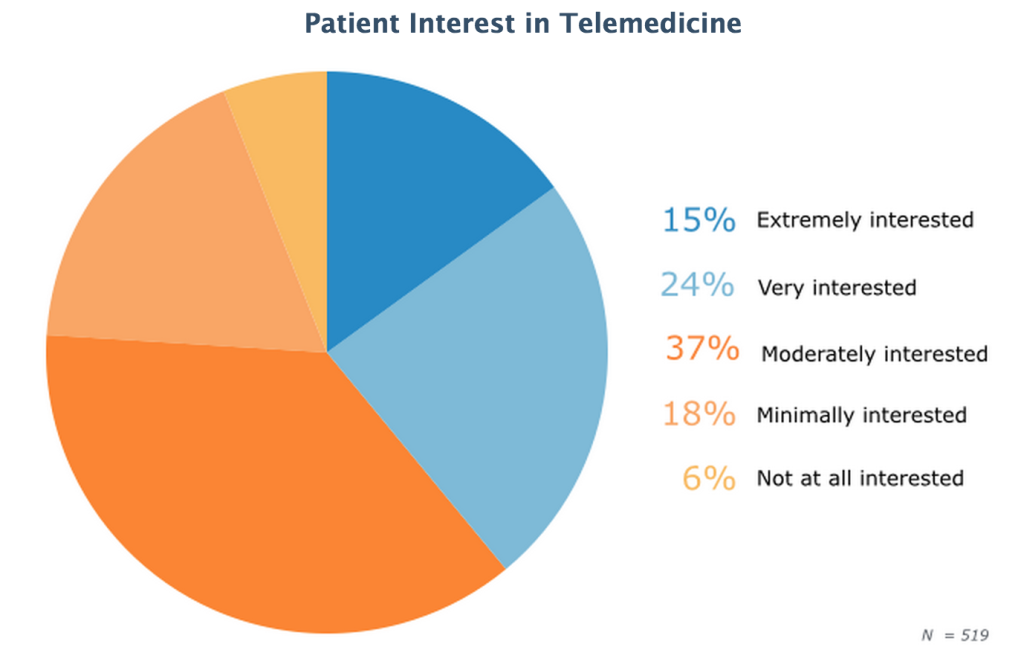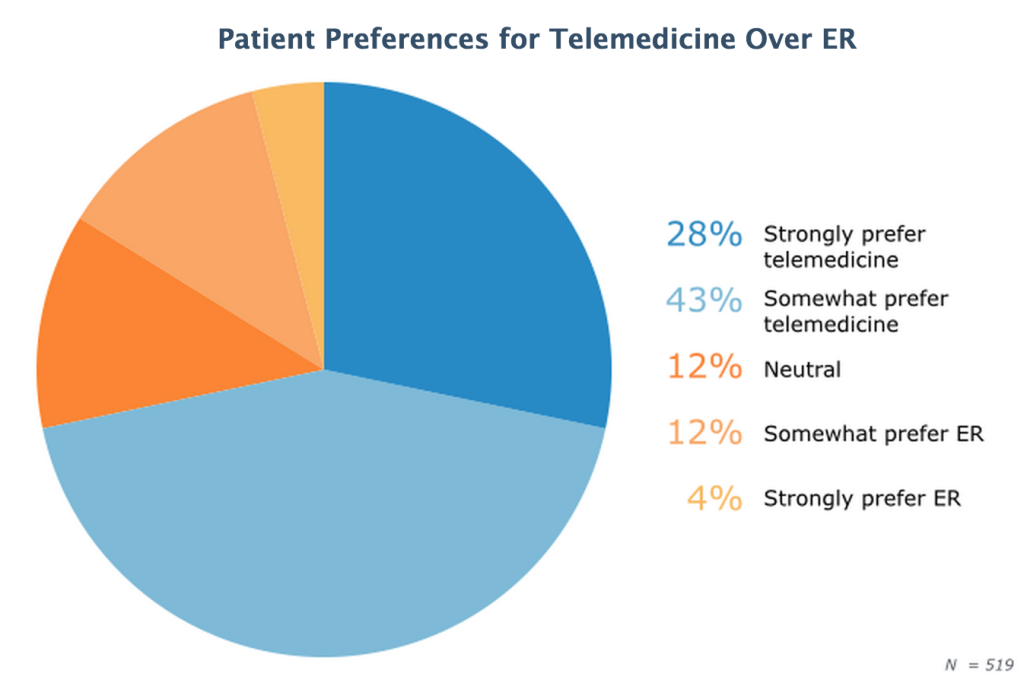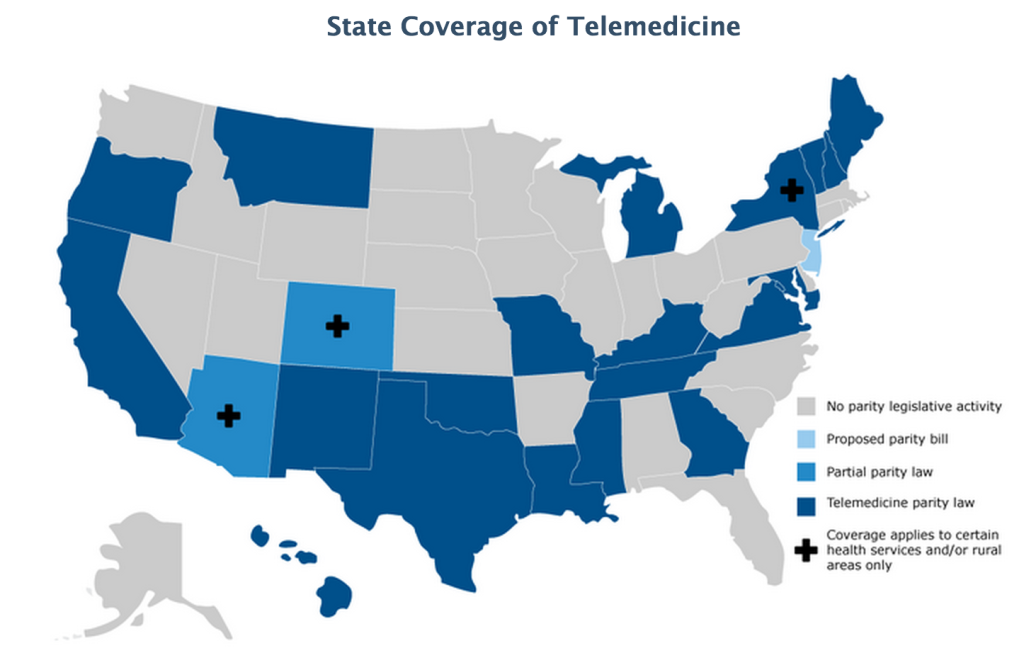Telemedicine is about to hit mainstream. What every doctor should know.
We know patients want it.
Softwareadvice.com performed a 519 person survey to gauge interest in telehealth. They found that the majority of patients were at least "moderately interested" in using telehealth in lieu of a traditional in person doctors visit.1

Furthermore, the study showed that 71% of respondents would utilize telehealth videoconferencing instead of the ER for minor health problems.1 This could dramatically cut healthcare costs given the average visit to the Emergency Room can be a few thousand dollars while the average telehealth visit is only $45.

We know the government wants it.
A core goal of the “FEDERAL HEALTH IT STRATEGIC PLAN 2015 – 2020” is to "strengthen health care delivery by improving health care quality, access, and experience through safe, timely, effective, efficient, equitable, and person-centered care."2
A strategy listed to accomplish this is, “to incorporate telehealth and mobile health technologies and services within federal programs funding or providing health care and innovation model initiatives to improve access to and quality of health care services.”2
What the laws say.
Laws regarding the scope of telehealth practice are unique to each state. For example, some states like Idaho completely prohibit the practice of telehealth while others are more permissive environments and may lack additional regulations above existing standards of medical care such as in Florida (FL).
According to the American Medical Association, "The immense range in law means that it is essential for physicians to consult with the laws of all applicable states before providing telehealth services" and recommends physicians consider the following when practicing telehealth:3
- What requirements must be met in order to establish a patient-physician relationship?
- What are the laws regarding internet prescribing?
- What are the local laws governing issues such as consent, care of minors, reproductive rights, and end-of-life care?
- How will you document this encounter and coordinate with the patient’s other providers?
- What protocols do you have in place for emergency care?
- Are there scope of practice laws in your state or your patient’s state that may apply to the encounter?
- Do you have the necessary licenses to practice in your state as well as your patient’s state?
- Does your liability insurance cover you for the manner in which you intend to practice?
- Are there considerations pertinent to the patient’s health insurance that should be contemplated.
New technology is facilitating it.
You might consider looking at some of the new technologies that are making telehealth more accessible for patients and physicians.
- VSEE is making telehealth even easier by providing a technology platform that utilizes half of the bandwidth of traditional teleconferencing platforms. This is especially important for rural locations that may not have great internet connections.
- Teladoc is a company enabling such telehealth consultations to rural or underserved areas by hiring U.S. board-certified primary care physicians who add telehealth to their current practices.
- AppMedicine is another company that simplifies non-emergency communication between patients and health care providers. Physicians can charge a flat fee per app visit which can improve patient satisfaction and provide affordable access to care.
But, will insurance cover it?
Right now 22 states have parity laws that require insurers to reimburse for telehealth visits.1 If your state is on the map, you should still check with state laws and a good lawyer regarding the practice of telehealth so that you do not endanger the license you worked so hard for.

With policy changes, it is likely that we will see more states following suit with enacting telehealth legislation and policy changes. The future is bright for this industry!
Works Cited:
1 http://www.softwareadvice.com/medical/industryview/telemedicine-report-2015/
2 http://www.healthit.gov/sites/default/files/federal-healthIT-strategic-plan-2014.pdf
3 http://www.ama-assn.org/ama/pub/physician-resources/legal-topics/telemedicine.page
















